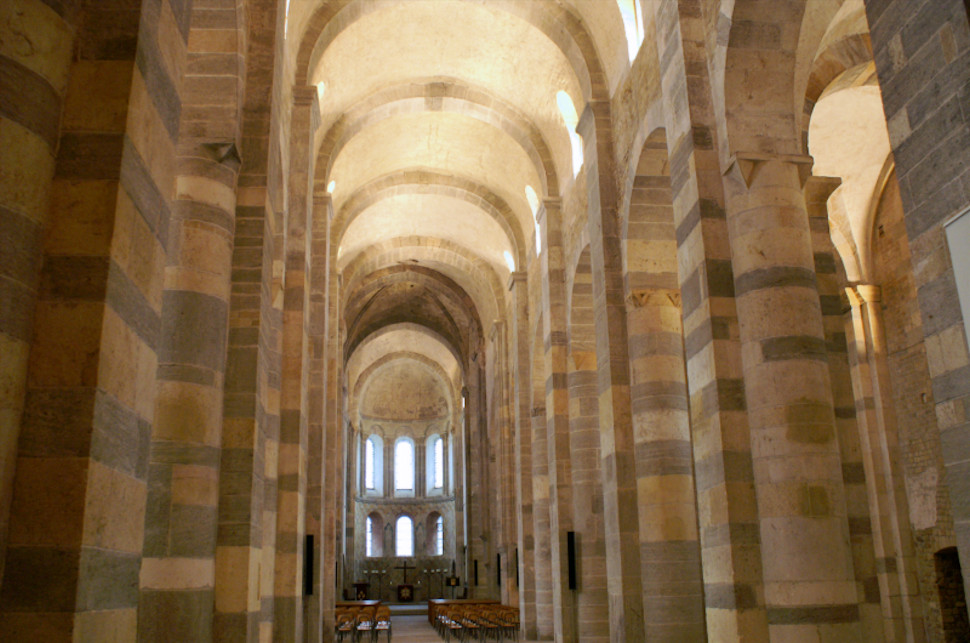The church of Payerne is one of the most beautiful romanesque buildings in Switzerland!
In the 10th century Queen Bertha, the widow of King Rudolf II of Strasbourg, founded a monastery in Payerne. Around 960, a first church with three naves was built on the site of a Roman villa and placed under the control of Cluny Monastery. Queen Bertha's daughter Adelheid, the second wife of Otto the Great, comes to pray at her mother's grave in 999. Her generous donations made it possible to build a new church which took over 50 years to complete and which today, more than 1000 years later, still exists without major alterations.
With the conquest of Vaud in 1536, Payerne came under Bernese rule, and in the course of the Reformation, introduced by the Bernese in Vaud, the monks had to leave the monastery in 1536. Parts of the convent buildings were demolished or converted.
ITo the west, the nave ends in a massive bastion-like structure that contains the vestibule (with 13th century murals) and the Chapel of St. Michael on the upper floor. Its high hipped roof was only built in the 15th century. The crossing tower was rebuilt in Gothic style after a fire in the 16th century.
Fresco depicting the Last Judgement in the entrance hall.
The apse
The nave from the first half of the 11th century seen from the choir. The windows cut into the foot of the barrel vault let in plenty of light.
The right side aisle
The nave as seen from the porch. Click to enlarge!
Semicircular templates are attached to the nave piers with their changing stone colours. The barrel vault is supported by chords. These chords are supported from below, almost a bit of anticipated Gothic.
The capitals of Payerne. They are exhibited in the Chapel of St Michael above the vestibule and obviously date from the first church building in the 10th century..
Of the former convent buildings south of the abbey church, only the chapter house, newly built at the beginning of the 16th century, has survived. A small museum is now housed there.
It is a pity that the cloister no longer exists. The grey stripe on the walls gives an idea of the approach to the former cloister.
